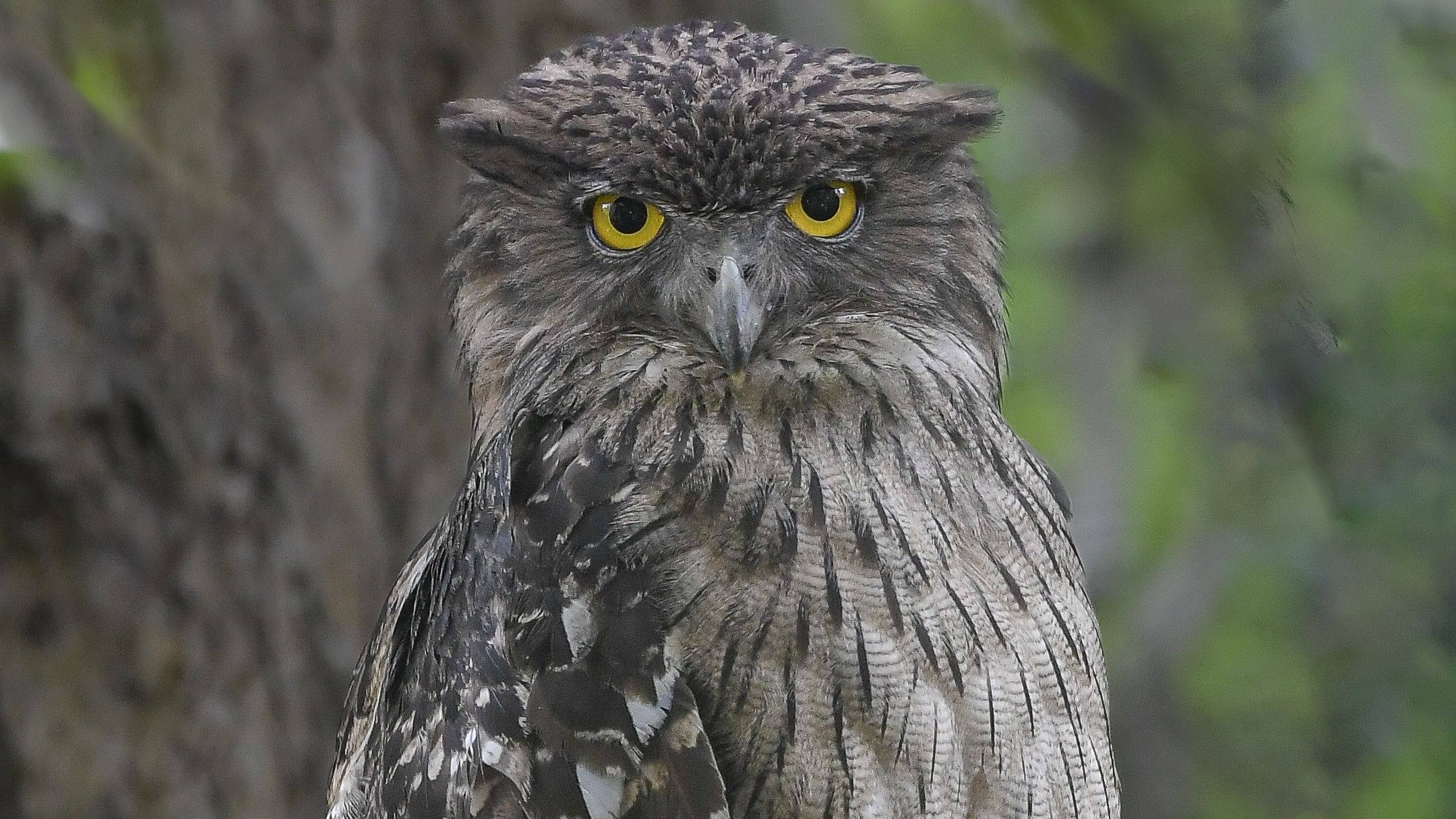
Varoon Mehta, an 11-year-old amateur birder from Mumbai, was all ears, as Rajani Rao spoke at the Dandeli old timber depot. She was explaining how the male hornbill carries hundreds of nutritious fruits in its neck to feed the female hornbill, which has packed itself in a tree cavity after laying an egg there.
A few minutes ago, Varoon had seen a pied hornbill gulping tens of ripped ficus fruit from one of the several fruiting trees at the depot.
“The male hornbill is known to travel a nearly 40 km radius each day to ensure his partner, who has shed all her feathers and enclosed herself in a cavity, gets the best, healthy food during the gestation period,” Rajani explains. The hornbill couples are pairs for a lifetime — if one dies, the other lives alone for the rest of its life.
While Varoon fired off one question after the other to Rajani on the fascinating life cycle of hornbills, his mother Prithi was more interested in understanding the dynamics of the mates, some of which can be described as ‘couple goals’. Take, for instance, the mating ritual where the male hornbill brings in a variety of fruits, lizards, rodents and snakes to impress the female and the concept of living together forever.
Dandeli-Joida is among the very few places in South India where one can find all four types of hornbills: the great Indian hornbill, the Malabar-pied hornbill, the Malabar grey hornbill, and the Indian grey hornbill.
Checklist of the rare
Given the biodiversity in the Western Ghats, the region has become one of the most sought-after places for birders and nature lovers. The checklist drawn up by 32-year-old Rajani, a naturalist, documents nearly 270 varieties of birds found in and around Dandeli, Badakanshirda lake, Ganeshgudi, Joida, Kulgi nature camp, Kaadumane and surrounding areas.
Apart from hornbills, the landscape comprising water bodies, valleys and grasslands is home to owls, flycatchers, barbets, doves, woodpeckers, bulbuls and several raptors.
The hornbill conservation area, which includes Dandeli, Joida and Kali Tiger Reserve, has become a paradise for migratory birds thanks to the conservation efforts made by the forest department and locals, who have planted several fruit-bearing trees here over the years.
“The thick jungle in Dandeli and Joida makes it very difficult for an outsider to sight rare birds. This is where Rajani comes into the picture. Her vast knowledge of the geography, and her understanding of the birds’ habitats and behaviour have helped me photograph some of the rarest birds and and sight some species of birds for the first time,” says S N S Murthy, an amateur photographer and senior auditor with the Accountant General.
Rajani has become the go-to naturalist at Dandeli for bird photographers. “She is able to predict the next move of the bird. She can tell us how it would react if we approach it, which angles are best to get better pictures,” Murthy says. He adds that her most important quality is that she prioritises ethical birding and would never cross the line, disturbing the birds and their habitats.
Birders and nature lovers from Maharashtra, Andhra Pradesh, Telangana, Tamil Nadu, Delhi and even from other countries have been contacting Rajani to find the ‘jewels of Western Ghats’ right from trogons to hornbills.
Late actor Puneeth Rajkumar, actors Ravichandra and Rishab Shetty, judges, doctors and many others have enlisted her help to explore the wilderness in Dandeli.
A keen spotter
Urmee S Kulkarni, a Pune-based bird photographer, says what sets Rajani apart from other naturalists in the region is the way she spots the birds. “She is a sharp observer and listener. By just the bird call, she can identify the bird and how far it is. This comes only with patient learning and dedication,” she says. The photographer adds that it was thanks to Rajani that she and her husband Shrirang were able to capture images of the trogon, paradise flycatcher, jungle owlet, heart-spotted woodpecker and other birds that they had been seeking out for the last 20 years.
Not just avid bird photographers, but even the general public who visit Dandeli make use of Rajani’s services to understand the diverse avian world. Sahana Bhat, a Bengaluru-based psychiatrist, says 10 of her friends went to Dandeli to enjoy the scenery for two days, but returned with vast information about several birds.
“What we liked the most about Rajani was her friendly approach. She gave us information about each bird as if we were her students. Every bird she showed us had a fascinating story, including the important role it plays in nature,” says Sahana.
Rajani drew them closer to nature and helped them enjoy the silence of the forest, the chirping of birds and taught them to take deep breaths of pure oxygen, she adds. “The interaction with her will live with us forever.”
A few of Rajani’s guests have named her the ‘Rajanikant’ of Dandeli for her courage to venture out at night to help them see nocturnal birds such as owls, the Sri Lankan frogmouth, nightjars and flying squirrels among others.
Rajani, who has previously worked as a school teacher as well as a lawyer, says there is a need for someone to inform the visitors of Dandeli about the rich flora and fauna. “This is a land of diverse wildlife. Every tree here has a story to tell and if that story is not told, we will lose this paradise,” she says.
Imran Patel, Deputy Range Forest Officer at Kali Tiger Reserve, says Rajani is taking eco-tourism in the right direction. “There is a huge potential for eco-tourism in Dandeli and KTR. However, due to a lack of resources, not many are enjoying the true beauty of the region. Rajani has been helping visitors, including school and college students, understand the elements of nature,” he says.